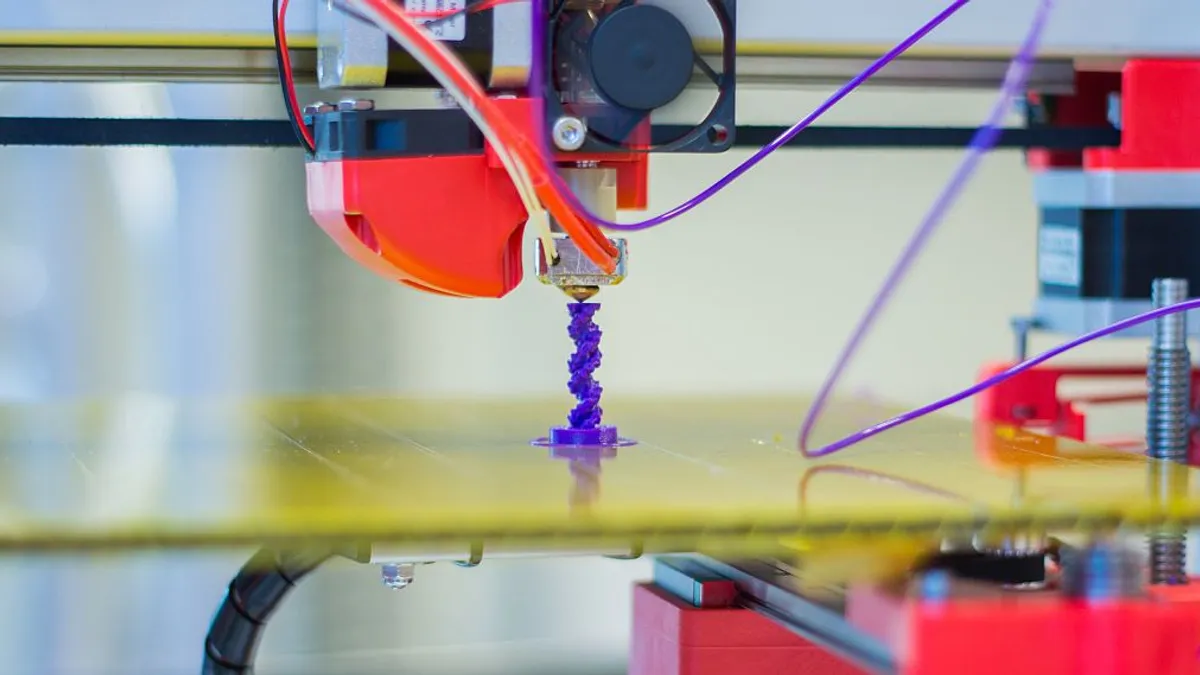Dive Brief:
- As of January 2, Amazon holds a patent for a 3-D printing production system that accepts custom orders for either delivery or pick-up, Geek Wire reported.
- The current system has been targeted for numerous patent applications in recent years, leading some to wonder if the idea has already become passe.
- Although Amazon initially established an online store for custom 3-D printing in 2014, that portion of its website continues to offer 3-D printing hardware and supplies only.
Dive Insight:
By dipping into the 3-D printing space, Amazon could be going after traditional hardware stores such as Home Depot, Lowe's and Menard's. Printing parts to fix furniture, appliances and other items around the house offers an attractive level of convenience for homeowners and renters.
Because the technology is relatively new, it's not very clear who the main target is; most millennials don't own homes, but they're more inclined to pay for items to be delivered to their doorsteps. Gen Xers own homes and tend to congregate in the suburbs, which means they're more inclined to make the drive to Home Depot or Lowe's to get what they need for home improvement projects.
Millennials aren't Home Depot's and Lowe's target consumers, partly because when they do buy homes, they buy and sell at a higher rate than Gen Xers and Baby Boomers, and are also less likely to buy "fixer uppers." That means Amazon offering custom 3-D printed parts may not necessarily be a threat to business.
Then there's the B2B angle: for small parts manufacturers, this is bad news. Already startups are using 3-D printing technology to make small parts faster at a higher quality for a lower price, and if Amazon enters the space, the competition with small manufacturers will only intensify.
Right now, Amazon just has the patents and has yet to roll out a full-fledged 3-D printing program. Traditional hardware retailers and small parts manufacturers may want to evaluate their business plans in case the e-commerce giant makes a move.














